This article contains spoilers for all ten episodes of The Terror.
In 1845 two ships, HMS Erebus and HMS Terror, departed from England in search of the fabled Northwest Passage in the Canadian Arctic but found only disaster and death. After the captain and multiple others died, the icebound ships were abandoned and the remaining crew set off into the wilderness and disappeared. This true-life mystery has received fictionalised treatment in Dan Simmons’ novel The Terror, which has recently been adapted into a ten-episode television series. At first the story seems to be a grounded historical drama, with excellent dialogue, acting, and character arcs, but soon an element that proceeded to baffle and intrigue me in equal measure was introduced: a supernatural beast known as Tuunbaq.
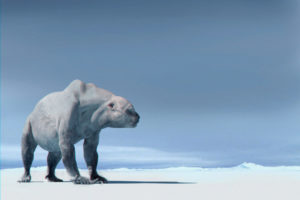 The monster is a vengeful spirit in the form of a beast, “made of muscles and spells”. While the majority of its body looks like that of a large polar bear, it has a disturbingly human face, and kills by both ripping apart its foes and consuming their souls. It is connected to the indigenous Inuits, not only by their mythology but also an actual psychic link with a Shaman, who removes their tongue and feeds it to the beast to take on the spiritual mantle. When the British accidentally kill the Shaman, they find the beast hunting them in the perilous landscape already full of dangers, both environmental and human.
The monster is a vengeful spirit in the form of a beast, “made of muscles and spells”. While the majority of its body looks like that of a large polar bear, it has a disturbingly human face, and kills by both ripping apart its foes and consuming their souls. It is connected to the indigenous Inuits, not only by their mythology but also an actual psychic link with a Shaman, who removes their tongue and feeds it to the beast to take on the spiritual mantle. When the British accidentally kill the Shaman, they find the beast hunting them in the perilous landscape already full of dangers, both environmental and human.
At first, I pondered whether the series needed a supernatural element, especially with the human drama being so well-executed. Was it to bring in a wider audience by turning it into a genre show? Some brief research supports this, with the writers claiming in an interview that they initially wanted to make the show without Tuunbaq but they couldn’t get the costly production funded. Yet, despite my initial trepidation, as the show began to wrap-up, I thought the inclusion of a monster was the right choice and it became a fascinating element that represented so much and ultimately enforced the grounded human and historical themes.
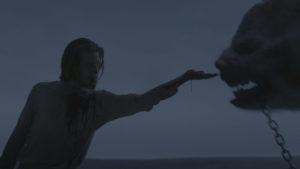 At a most basic level, Tuunbaq is a very literal representation of nature and its dangers in this part of the world. The beast’s inclusion is to have a way for the Arctic environment to kill crewmen in an entertaining way, rather than just see them all freeze or starve to death, which does still happen to many of them. These seemingly noble explorers are from the heart of the British Empire – the heart of ‘civilisation’ – and so the monster embodies their fear of the ‘savage other’ that exists beyond their borders. A deadly reminder that maybe they shouldn’t be out there on the ice. Even the beast’s name sounds like “turn back”.
At a most basic level, Tuunbaq is a very literal representation of nature and its dangers in this part of the world. The beast’s inclusion is to have a way for the Arctic environment to kill crewmen in an entertaining way, rather than just see them all freeze or starve to death, which does still happen to many of them. These seemingly noble explorers are from the heart of the British Empire – the heart of ‘civilisation’ – and so the monster embodies their fear of the ‘savage other’ that exists beyond their borders. A deadly reminder that maybe they shouldn’t be out there on the ice. Even the beast’s name sounds like “turn back”.
The military explorers seek to chart the unknown and do, indeed, discover the unknowable in Tuunbaq. So much of the monster’s nature is left ambiguous but that doesn’t stop the man calling himself Cornelius Hickey, the human antagonist, from thinking he can control the beast. But he can’t control Tuunbaq anymore than he can stop the sun from setting or the waters from freezing. Yet Tuunbaq does die in the finale and its death was the final element that made its inclusion work for me. It’s apparently a more blatantly supernatural creature in the book and survives in the end, but I can’t imagine this story working without its death. In this era nobody knew what lay beyond the edges of the map and imagination could run wild. But once new discoveries are made and the maps get filled in, all the mystique and magic is gone from the world and that’s when Tuunbaq dies. It can no longer exist in this new world.
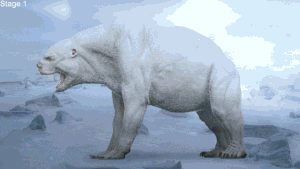 As well as vengeance for the Inuit killed, Tuunbaq embodies the damage the foreign invaders are doing to the land. As the beast becomes progressively more injured and weaker, so too does the natural balance of the environment. Food is becoming scarce, even for the indigenous people who have to move, and it’s implied that there is a link between this and the creature. The Shamans connect to the beast to maintain a link with nature and its balance, but the colonials disrupt this natural order. Not only do they shoot Tuunbaq with guns and cannons, and make it eat a body laced with forks, but the foreign men are literally toxic to it, they themselves having been poisoned with lead.
As well as vengeance for the Inuit killed, Tuunbaq embodies the damage the foreign invaders are doing to the land. As the beast becomes progressively more injured and weaker, so too does the natural balance of the environment. Food is becoming scarce, even for the indigenous people who have to move, and it’s implied that there is a link between this and the creature. The Shamans connect to the beast to maintain a link with nature and its balance, but the colonials disrupt this natural order. Not only do they shoot Tuunbaq with guns and cannons, and make it eat a body laced with forks, but the foreign men are literally toxic to it, they themselves having been poisoned with lead.
Tuunbaq’s death is full of deep meaning and, in the end, as we gaze upon its uncomfortably human-looking face and see the Inuits mourn, we understand it wasn’t just some monster hunting our ‘heroes’ but actually a victim. The true enemy was hubris and the foreigners’ belief they could conquer the ice. The beast’s death is an allegory for colonialism and its effects on the land and people. The colonials wish to control Tuunbaq but when it resists it is brought down and killed by the foreign invaders, just like native human populations. Tuunbaq dies literally choking on a chain. The plot may have us root for the crew of the ships but the subtext pleads with us to do the opposite. Captain Crozier is eventually the only man from the party left alive and he sees the damage he has done. That, and some other reasons, is why he decides to stay and live the life of an indigenous person, in balance with the land. But we know the story won’t end there. More men and ships will come.
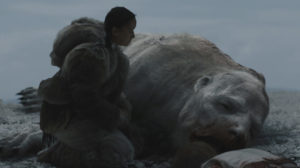 This article is as much about me working through my own thoughts as it is some kind of explanation, if not more. Despite my initial wariness, I think The Terror would be a much lesser show without Tuunbaq. The series remains a fictionalised historical account filled with rich characters making realistic decisions, no matter how brutal, and the supernatural addition only strengthens the human drama. As in the world of the show, Tuunbaq created and maintained a balance in the series. The monster added some visceral action and gory horror, but as with the best monster stories it was an outlet for allegory and deep themes too.
This article is as much about me working through my own thoughts as it is some kind of explanation, if not more. Despite my initial wariness, I think The Terror would be a much lesser show without Tuunbaq. The series remains a fictionalised historical account filled with rich characters making realistic decisions, no matter how brutal, and the supernatural addition only strengthens the human drama. As in the world of the show, Tuunbaq created and maintained a balance in the series. The monster added some visceral action and gory horror, but as with the best monster stories it was an outlet for allegory and deep themes too.
What are your thoughts on Tuunbaq? Let me know in the comments and be sure to geek out with me about TV, movies and video-games on Twitter @kylebrrtt.




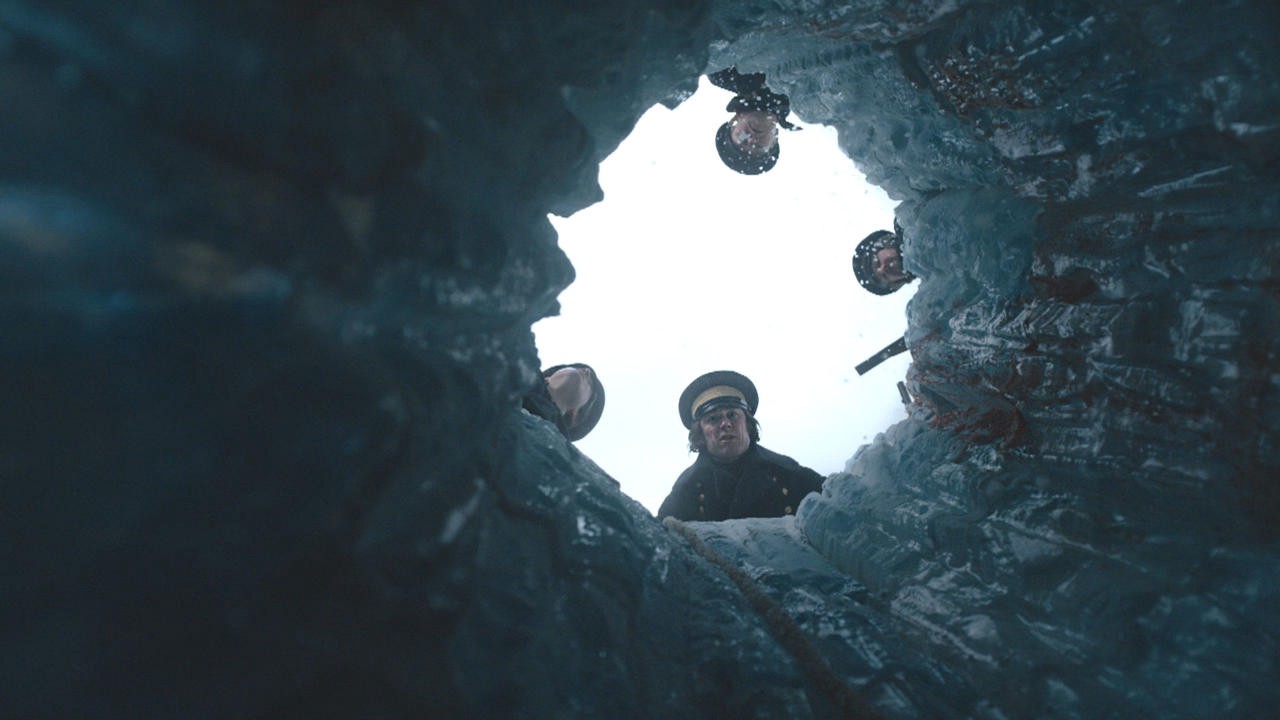




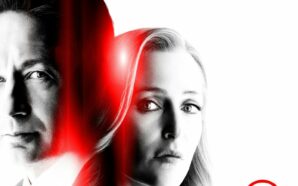
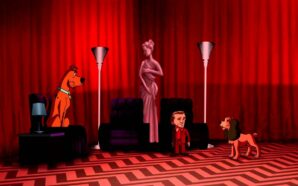
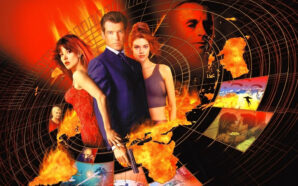
‘This creature is like is the Hyperion Shrike’, I thought, while watching the series. Then I looked and saw it was a book adaption, by Dan Simmons! “Ah!”, I internalised. “That will do it.”